Russia Intensifies Summer Offensive in Ukraine Amidst Fierce Ukrainian Resistance
Russia Intensifies Summer Offensive in Ukraine Amidst Fierce Ukrainian Resistance
Kyiv, Ukraine – Russia has significantly escalated its summer military push into Ukraine, focusing its efforts on three key fronts while encountering formidable resistance from Ukrainian forces. Recent reports indicate substantial territorial gains by Russian troops in the past month, marking their most significant land acquisition this year.
According to the open-source monitoring website DeepState in Ukraine, Russian forces have seized approximately 556 sq km (215 sq miles) of Ukrainian territory in the last month alone. This represents an area four times the size of Liverpool and nearly equivalent to the city of Chicago, underscoring the intensity of the current offensive.
The primary objectives of Russia’s summer campaign appear to be the disruption of critical supply routes for Ukrainian troops in the eastern regions and the establishment of a buffer zone along Ukraine’s northern borders. However, the pace of these advances remains comparatively slow, with current projections suggesting it would take over seven decades to capture the entire country at this rate.
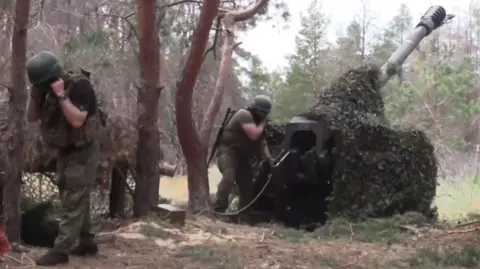
The main thrusts of the Russian offensive are concentrated in three primary areas: the Sumy region bordering Russia in the northeast, the eastern cities of Pokrovsk and Kostyantynivka, and a third axis west of Pokrovsk.
In the Sumy region, Russian troops initially advanced 10-12 km (6-7.5 miles) deep into Ukrainian territory. However, their progress has been halted by determined Ukrainian defense efforts.
Russia has also reportedly crossed the state border into the Kharkiv region, claiming the capture of a border village. Nevertheless, without significant troop and equipment reinforcement, substantial further gains in this area are considered unlikely.
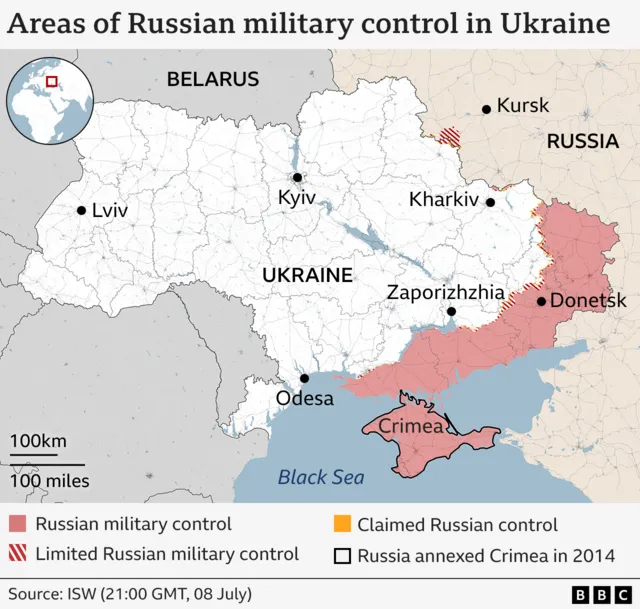
These operations are widely believed by military observers to be a strategic maneuver aimed at forcing Ukraine to divert its forces along the extensive 1,200-km front line, thereby weakening its defenses in critical sectors.
The eastern city of Pokrovsk, a vital strategic hub, has been a primary target for Moscow for over two years. General Oleksandr Syrskyi, head of Ukraine’s army, reported that Russia has amassed approximately 111,000 troops in this particular area, highlighting the concentration of forces.
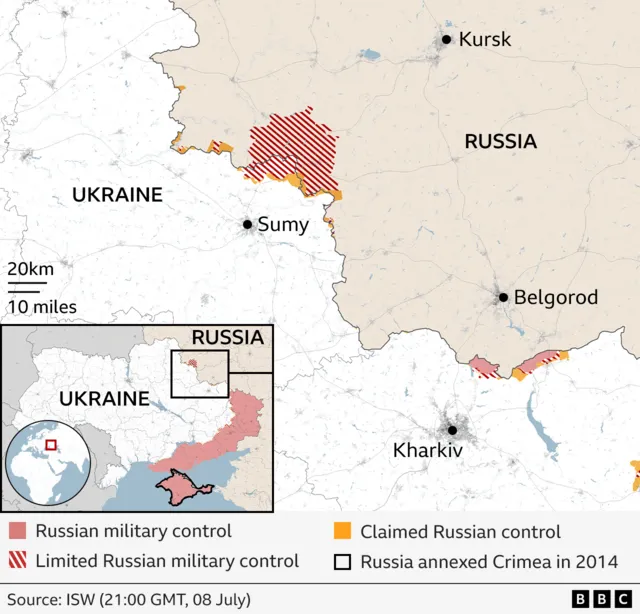
Lieutenant Artem Pribylnov of Ukraine’s 93rd Brigade, stationed near Pokrovsk, described the Russian tactics as relying on small infantry groups and relentless attacks rather than large-scale armored assaults. These smaller units often advance on foot or via motorbikes, aiming to exhaust Ukrainian defenses through constant attrition.
This “creeping offensive” strategy, while potentially costly for Russia in terms of personnel, aims to wear down Ukrainian resources over time. Ukraine’s General Staff claims daily Russian casualties exceed 1,000 soldiers, a figure that, while unverified independently by the BBC, suggests the immense human cost of these operations.
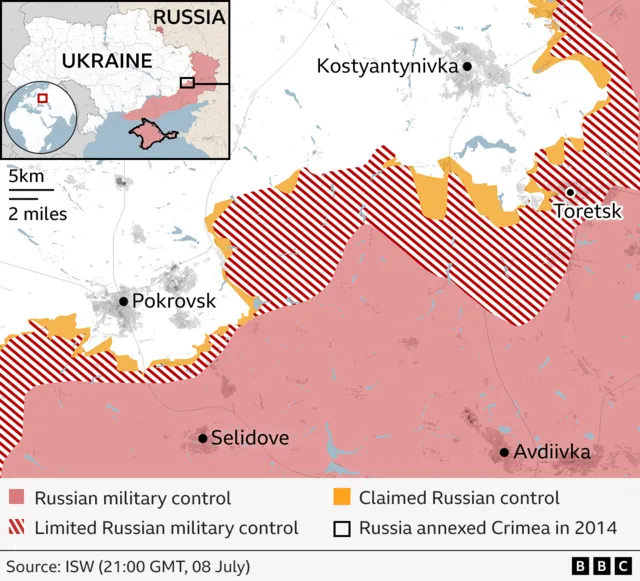
In eastern Ukraine, the Russian objective appears to be the encirclement of Ukrainian forces around Pokrovsk and Kostyantynivka, creating a “cauldron” scenario to force a retreat. However, advances in this sector are reportedly slowing, and previous attempts to flank these positions have stalled.
A more significant Russian advance has been observed west of Pokrovsk, in the Novopavlivske direction. Military observer Kostyantyn Mashovets noted that Ukrainian defenses in this area “collapsed,” allowing Russian forces to advance up to 10 km in a single day. This rapid movement led some Russian military bloggers to claim their troops had reached the neighboring Dnipropetrovsk region, although Ukrainian officials dispute the extent of this incursion.
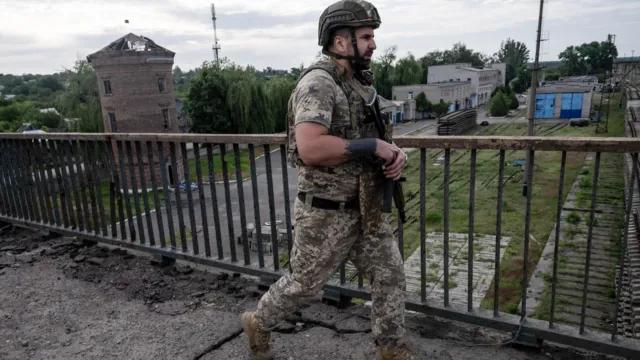
While Maj Viktor Trehubov, a spokesman for the Khortytsya operational-strategic group, suggests the push into Dnipropetrovsk may be politically motivated rather than strategically advantageous, the Institute for the Study of War indicates ongoing Russian activity in the area. The Ukrainian military asserts that any Russian soldiers who entered the region were quickly neutralized.
The current situation places increasing pressure on Ukrainian supply lines, with constant drone attacks disrupting the movement of essential resources. Staff Sgt Viktor Pyasetskyi of the 93rd Brigade stated that previously accessible routes are now too dangerous to use, even at night, severely complicating the delivery of food, ammunition, and troop rotations.
Long-range Russian drones, such as the Gerbera, are capable of reaching areas previously considered safe, posing a threat to both military logistics and civilian morale. Staff Sgt Pyasetskiy emphasized that these attacks aim not only to degrade defense lines but also to terrorize the population and undermine faith in Ukraine’s resilience, citing recent drone strikes on civilian buildings.
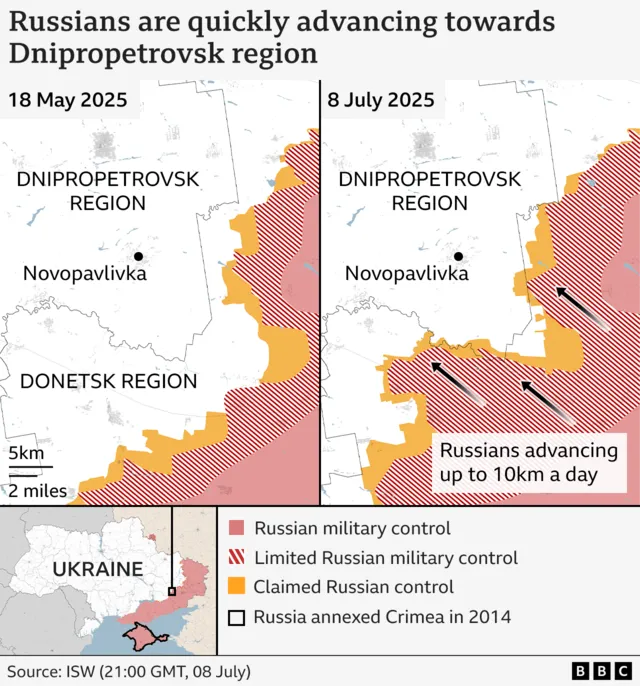
Despite the mounting challenges, Ukrainian forces continue to mount a determined defense, adapting to the evolving tactics of the Russian military.
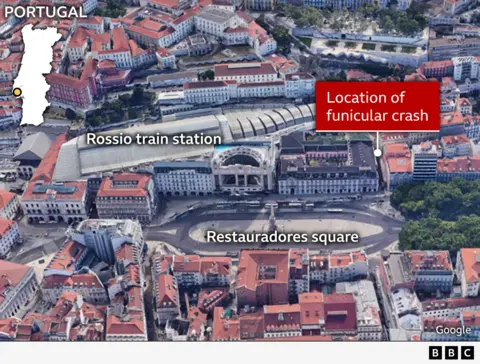


Post Comment